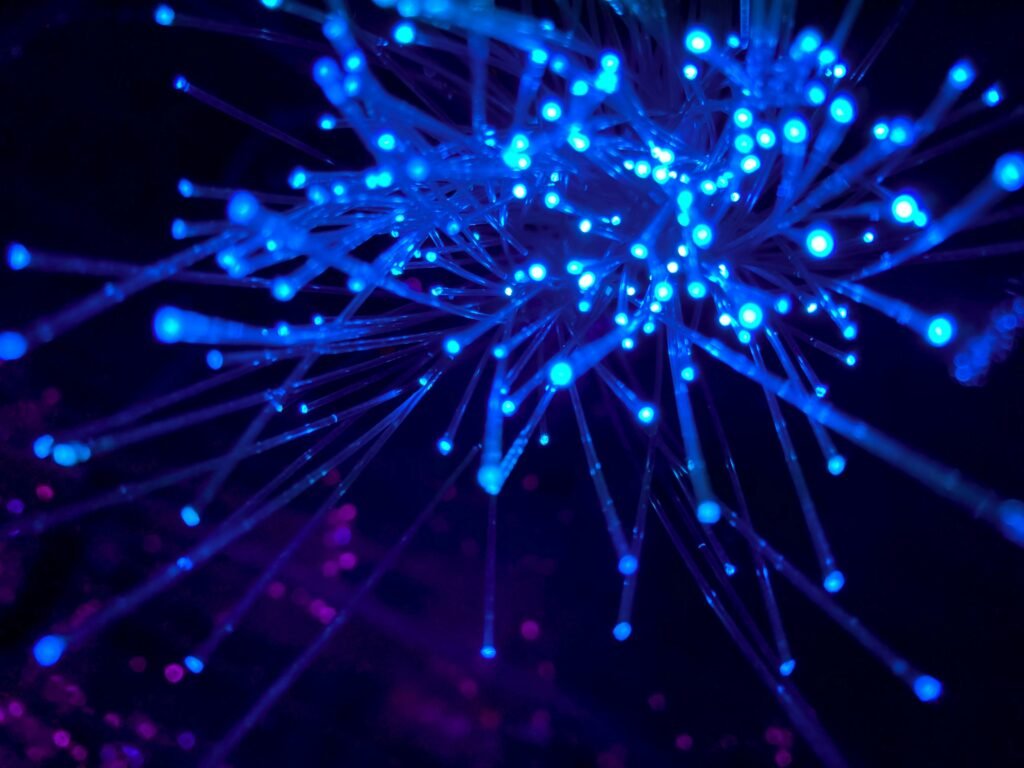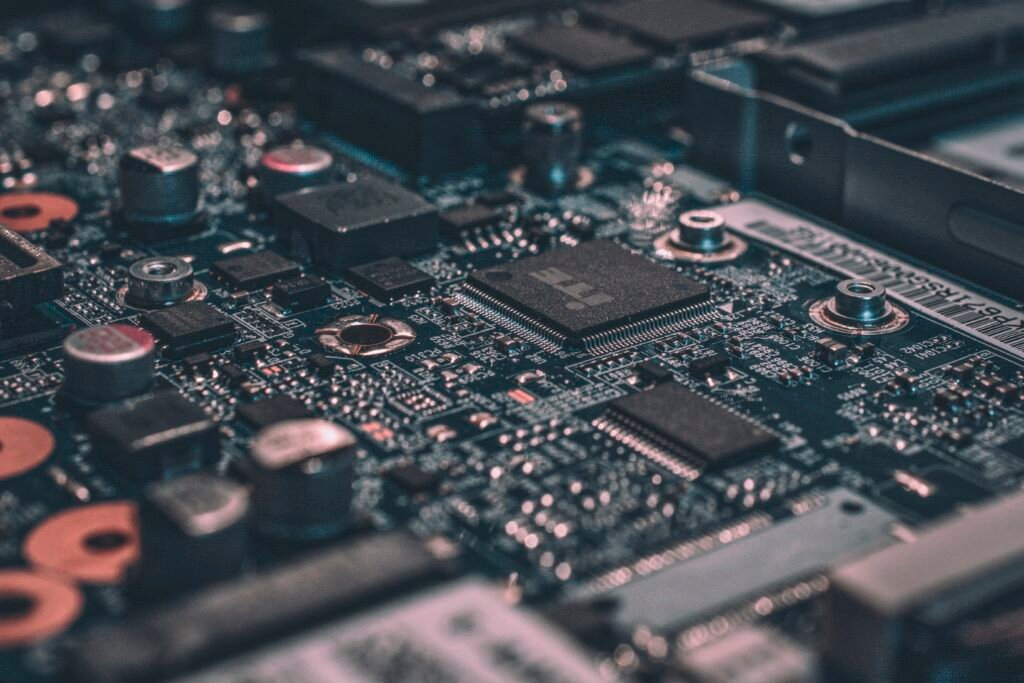Imagine effortlessly sliding your sleek leather wallet out of your pocket, feeling the smoothness of the material and admiring the intricate craftsmanship. Now, prepare to be astounded as we unveil the groundbreaking technologies revolutionizing the process of leather wallet manufacturing. From cutting-edge materials to automated precision, these innovations are reshaping the industry and elevating the quality and durability of every wallet. Step into a world where tradition meets technology, and discover how these extraordinary advancements are shaping the future of leather wallet production.

This image is property of images.unsplash.com.
Advanced Materials
1.1 Smart Leather
In the world of leather wallet manufacturing, the use of smart leather has revolutionized the way wallets are made. Smart leather is a material that combines traditional leather with advanced technological features, allowing for enhanced functionality and durability. With smart leather, you can now have wallets that are not only stylish but also equipped with features such as RFID blocking technology and wireless charging capabilities. This means that your wallet can protect your valuable information from being stolen and even charge your phone on the go. Smart leather is a game-changer in the industry, providing users with a seamless blend of fashion and technology.
1.2 Recycled Materials
Sustainability has become a major concern in recent years, and the leather wallet manufacturing industry is no exception. By incorporating recycled materials into the production process, manufacturers are able to reduce their environmental impact and create more eco-friendly wallets. Recycled materials can include anything from recycled leather scraps to recycled plastics, all of which can be transformed into high-quality wallets. By using recycled materials, not only are manufacturers reducing waste, but they are also providing consumers with a guilt-free option when it comes to purchasing leather wallets. This is a significant step towards a more sustainable and responsible industry.
Digital Design and Prototyping
2.1 3D Modeling
Gone are the days when designers had to rely solely on pen and paper to create wallet prototypes. With the advancement of technology, 3D modeling has become a key tool in the leather wallet manufacturing process. By using specialized software, designers can now create virtual 3D models of wallets, allowing them to visualize and refine their designs before production. This not only saves time and resources but also ensures that the final product meets the desired specifications. 3D modeling has revolutionized the design process, enabling designers to bring their ideas to life with precision and efficiency.
2.2 Computer-Aided Design (CAD)
Alongside 3D modeling, computer-aided design (CAD) has become an essential component of leather wallet manufacturing. CAD software allows designers to create detailed technical drawings of wallets, specifying every aspect of the design, from measurements to stitching patterns. This level of precision ensures that the wallets are manufactured exactly as intended, reducing errors and minimizing waste. CAD also enables designers to easily make modifications and iterations, making the design process more flexible and adaptive. With CAD technology, designers can create wallets that are not only aesthetically pleasing but also structurally sound.

This image is property of images.unsplash.com.
Automation and Robotics
3.1 Cutting and Stitching Machines
Automation has significantly transformed the manufacturing process of leather wallets. Cutting and stitching machines, in particular, have revolutionized the way wallets are produced. These machines are capable of cutting leather with unparalleled precision, ensuring that each piece is perfectly shaped and sized. With the introduction of robotic stitching, the process of sewing wallets has become faster and more efficient. Automation eliminates the need for manual labor, reducing costs and increasing productivity. The use of cutting and stitching machines has not only improved the quality of leather wallets but has also made them more accessible to a wider range of consumers.
3.2 Robotic Assembly
Robotic assembly has revolutionized the production of leather wallets by streamlining the assembly process. With robotic arms and advanced programming, the entire process of assembling wallets can be done with speed and precision. Robots can perform tasks such as folding, gluing, and attaching hardware, ensuring consistent quality and accuracy in every wallet. This level of automation not only increases efficiency but also reduces the risk of errors and defects. By leveraging robotic assembly, manufacturers can produce wallets at a faster rate while maintaining high standards of craftsmanship.
Nanotechnology and Surface Treatments
4.1 Self-Cleaning Properties
Nanotechnology has introduced a range of innovative surface treatments that have transformed the functionality of leather wallets. One such treatment is the incorporation of self-cleaning properties. By applying a nanocoating to the surface of the leather, wallets can repel dirt, liquids, and stains, keeping them looking clean and fresh for longer periods. This innovative feature is particularly beneficial for those who lead active lifestyles or frequently use their wallets in various environments. With self-cleaning properties, maintaining the cleanliness and longevity of your leather wallet has never been easier.
4.2 Enhanced Durability
Another application of nanotechnology in leather wallet manufacturing is the enhancement of durability. By using nanomaterials and specialized treatments, manufacturers can significantly improve the strength and resilience of leather wallets. These treatments can make the leather more resistant to scratches, scuffs, and wear, ensuring that your wallet stays in pristine condition for an extended period. Enhanced durability not only extends the lifespan of your wallet but also reduces the need for frequent replacements, making it a more sustainable choice. With nanotechnology, you can enjoy a wallet that not only looks great but also withstands the test of time.

This image is property of images.unsplash.com.
Biotechnology and Sustainable Practices
5.1 Bio-based Leather Alternatives
As the demand for more sustainable and cruelty-free products grows, the leather wallet manufacturing industry has turned to biotechnology for solutions. Bio-based leather alternatives, such as mushroom leather and pineapple leather, have emerged as environmentally friendly substitutes for traditional animal-derived leather. These materials are made using innovative biotechnological processes that utilize natural fibers and waste materials. Bio-based leather alternatives offer the same luxurious appearance and feel as traditional leather while reducing the industry’s environmental impact. By embracing biotechnology, manufacturers are providing consumers with more sustainable and ethical options when it comes to choosing a leather wallet.
5.2 Environmentally Friendly Tanning Methods
Tanning is a crucial process in leather production, but traditional tanning methods often involve the use of harsh chemicals that can be harmful to the environment. However, advancements in biotechnology and sustainable practices have led to the development of environmentally friendly tanning methods. These methods utilize organic and eco-friendly substances, such as plant-based tanning agents and natural dyes. By minimizing the use of chemicals and reducing water consumption, these sustainable tanning methods help reduce pollution and promote a healthier ecosystem. Environmentally friendly tanning methods ensure that leather wallets are not only beautiful but also produced with a commitment to sustainability.
Smart Features and Connectivity
6.1 RFID Blocking Technology
In the digital age, protecting personal information has become increasingly important. RFID blocking technology has emerged as a vital feature in leather wallets, providing users with enhanced security against electronic pickpocketing. RFID blocking wallets are equipped with a lining that creates a Faraday cage, preventing unauthorized scanning or cloning of RFID-enabled cards. This technology ensures that your credit card information and other sensitive data remain safe and secure. By incorporating RFID blocking technology, leather wallet manufacturers are prioritizing the security and peace of mind of their customers.
6.2 Wireless Charging
With the growing reliance on smartphones, the need for convenient charging options has become paramount. Leather wallets with wireless charging capabilities offer a solution to this challenge. These wallets are equipped with wireless charging pads or pockets, allowing users to charge their smartphones on the go. By simply placing their phone in the designated area, users can wirelessly charge their devices without the hassle of carrying around charging cables. The integration of wireless charging technology into leather wallets exemplifies the industry’s commitment to meeting the evolving needs of tech-savvy consumers.
Customization and Personalization
7.1 Laser Engraving
Customization has become a significant trend in the leather wallet industry, allowing users to personalize their wallets and make them truly unique. Laser engraving is one of the most popular methods of customization, enabling users to add names, initials, or even intricate designs to their wallets. Laser engraving offers a high level of precision and detail, creating a lasting impression on the leather surface. Whether it’s for personal use or as a gift, laser-engraved leather wallets allow individuals to express their individuality and style.
7.2 Embossing and Printing
In addition to laser engraving, embossing and printing are widely used techniques for customizing leather wallets. Through embossing, wallets can be adorned with raised logos, patterns, or text. The process involves pressing a heated die into the leather, leaving behind a permanent impression. Printing, on the other hand, allows for more intricate and vibrant designs to be applied to the leather surface. By using advanced printing technologies, manufacturers can achieve highly detailed and colorful graphics on wallets. Both embossing and printing offer endless customization possibilities, allowing individuals to create wallets that truly reflect their personal style and preferences.
Supply Chain Transparency and Traceability
8.1 Blockchain Technology
Supply chain transparency has become a growing concern among consumers, especially when it comes to industries like leather wallet manufacturing. Blockchain technology has emerged as a powerful tool in addressing this issue. By implementing blockchain systems, manufacturers can ensure transparency and traceability throughout the entire supply chain. Each step of the manufacturing process, from sourcing materials to final production, can be recorded on the blockchain, creating an immutable record of the wallet’s journey. This level of transparency allows consumers to make informed purchasing decisions and support brands that prioritize ethical and sustainable practices.
8.2 QR Codes
QR codes have become increasingly prevalent in the leather wallet industry as a means of providing consumers with access to information about the product’s origin and manufacturing process. By scanning a QR code on the wallet, users can learn about the materials used, the manufacturing techniques employed, and even the artisans involved in creating the product. This level of transparency empowers consumers to make conscious choices and supports brands that prioritize sustainability and ethical practices. QR codes provide a simple and effective way to bridge the gap between manufacturers and consumers, fostering trust and accountability in the industry.
E-commerce and Direct-to-Consumer Models
9.1 Online Customization Tools
E-commerce has revolutionized the way we shop, and the leather wallet industry has embraced this shift by offering online customization tools. These tools enable consumers to design their own wallets, choosing everything from the type of leather to the placement of pockets and compartments. Online customization tools give users the freedom to create a wallet that perfectly suits their needs and style preferences. This direct-to-consumer approach eliminates the need for middlemen and allows manufacturers to cater to individual tastes with ease.
9.2 Virtual Try-On
One of the challenges of online shopping has always been the inability to physically try on products before making a purchase. However, virtual try-on technology has emerged as a game-changer in the leather wallet industry. By utilizing augmented reality (AR) or virtual reality (VR) platforms, consumers can virtually “try on” different wallet designs and see how they would look and fit in real-time. This technology enables users to make more informed decisions when purchasing leather wallets online, reducing the likelihood of returns and ensuring a satisfying shopping experience.
Sustainable Packaging
10.1 Biodegradable Materials
To complement the sustainable features of leather wallets, manufacturers have started focusing on sustainable packaging solutions. Biodegradable materials, such as recycled cardboard or plant-based plastics, are being used to create packaging that is both environmentally friendly and visually appealing. By opting for biodegradable packaging, manufacturers can minimize their contribution to landfill waste and promote a more circular economy. Sustainable packaging serves as a reminder that the leather wallet industry is committed to sustainability throughout the entire product lifecycle.
10.2 Minimalist Designs
In addition to using biodegradable materials, the adoption of minimalist designs in packaging has become a trend in the leather wallet industry. Minimalist packaging focuses on simplicity and avoids excessive use of materials. By using sleek and compact packaging, manufacturers can reduce waste and transportation costs while still protecting the wallet during transit. Minimalist designs also have an aesthetic appeal, conveying a sense of sophistication and elegance. This shift towards minimalism reflects the industry’s dedication to sustainability and showcases the concept that less can truly be more.
In conclusion, the leather wallet manufacturing industry is undergoing a significant transformation thanks to revolutionary technologies. From the use of smart materials to the integration of advanced features, such as RFID blocking and wireless charging, manufacturers are providing consumers with wallets that are not only stylish but also highly functional. The implementation of automation and robotics has streamlined the production process, increasing efficiency and reducing costs. Furthermore, advancements in nanotechnology, biotechnology, and sustainable practices have contributed to the creation of more environmentally friendly and durable wallets. Customization options, supply chain transparency, and e-commerce innovations have also allowed consumers to have a more personalized and informed shopping experience. Lastly, sustainable packaging solutions have emerged to complement the environmentally conscious efforts of the industry. With these technological advancements and sustainability initiatives, the leather wallet manufacturing industry is poised to meet the evolving needs and expectations of consumers in a responsible and innovative manner.
